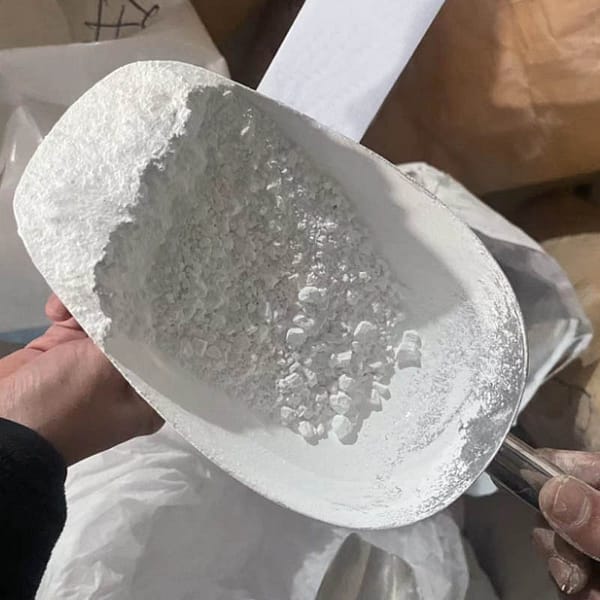Titanium dioxide (also called TiO2, white titanium or Pigment White 6 – PW6)) is an awe-inspiring ingredient in many industries. It’s particularly prevalent in rubber, paints plastics and paper. This versatile compound, with its stunning white pigment plays a vital role in transforming raw materials into stunning finished products. Let’s explore the fascinating properties of titanium dioxide, examining its applications, production processes, and the crucial influence it exerts on many industries.
The Canvas of Titanium Dioxide: A palette of Possibilities
Titanium dioxide is a cornerstone in the production of numerous items, contributing to the aesthetic appeal and function of the items we use every day. Pigment White 6 is used to create paints. It provides a bright and opaque white that increases the appeal of artistic and industrial processes.

In the field of plastics, titanium dioxide not only imparts color, but also functions as a UV stabilizer, providing protection from the harmful effects caused by ultraviolet radiation. This double-purpose makes it an important ingredient in a myriad of plastic products including packaging materials and tough outdoor items.
The Manufacturing Alchemy of Titanium Dioxide Production Processes
Production of titanium dioxide is an intricate procedure, and two techniques are most popular methods: the sulfuric acids method and chlorination method. Each method has distinct applications and intricacies that add to the variety of applications that titanium dioxide can be used in across different industries.
Sulfuric Acid Method – This method involves the reaction between the sulfuric acid and titanium-bearing minerals. It results in an acid solution containing titanium sulfate. The solution is then hydrolyzed to produce hydrated titanium dioxide. The final product after being calcinated is a white powder that can be used in numerous applications, particularly the paper and paint industries.
The Chlorination Technique In contrast, using chlorine gas, this method uses titanium-bearing minerals to create titanium Tetrachloride. After a series of chemical reactions, titanium tetrachloride could be oxidized into pure titanium oxide. This process is widely employed in the manufacture and use of titanium dioxide in the rubber, plastics and various other industries.
Titanium Dioxide Applications: Art and Science
Titanium dioxide is a leading ingredient in the production of paints across all industries. Its capability to create a vibrant white hue with excellent coverage and durability makes it a preferred option for homeowners, artists and industrial uses alike. The brilliant white color it brings to canvas isn’t just a visual effect, but also functional. It increases the durability of the painted surface.
Shaping Plastics with Radiance: In plastics, titanium dioxide serves a dual purpose. Beyond its role as a pigment for white, it functions as a UV stabilizer, offering crucial protection against the degrading effects of sunlight. Titanium dioxide is therefore an essential element of the production process for outdoor plastics because it helps to ensure that they maintain their structural integrity and appeal as they age.
In the paper industry titanium dioxide is a key ingredient in the clarity and whiteness of paper products. The addition of titanium dioxide improves the clarity and brightness of the printed materials. Titanium dioxide is employed in the manufacture of paper for more than just aesthetic reasons. It is also a key factor in improving the overall quality.
Rubber Resilience & UV Resistance: The business gets benefit from the UV resistance that titanium dioxide gives. Titanium dioxide shields rubber-based products from the damaging ultraviolet radiation.
Beyond Pigment: Titanium Dioxide’s Invisible Impact
While titanium dioxide’s impact is very evident in its use as an ingredient in pigments, its significance extends far beyond color. Due to its capability to enhance the strength, durability and endurance of various different industries It is a non-visible but essential component of quality and performance.
The result is that titanium dioxide transforms into a substance with profound significance that seamlessly integrates itself into multiple industries. Pigment White 6 is a pigment that can add glamor to the canvas of every kind that are industrial or artistic. The production process is a mix of two processes which are chlorineation and sulfuric acid. This makes it suitable for a wide spectrum of possible applications. Titanium dioxide is a great illustration of the harmonious blending between art and science that is present in the production of. It can be utilized to enhance the appearance of paints, protect materials from UV rays and increase the brightness of papers. The brilliance it imparts illuminates our lives every day, forming a spectrum of products with lasting impact and enduring radiance.